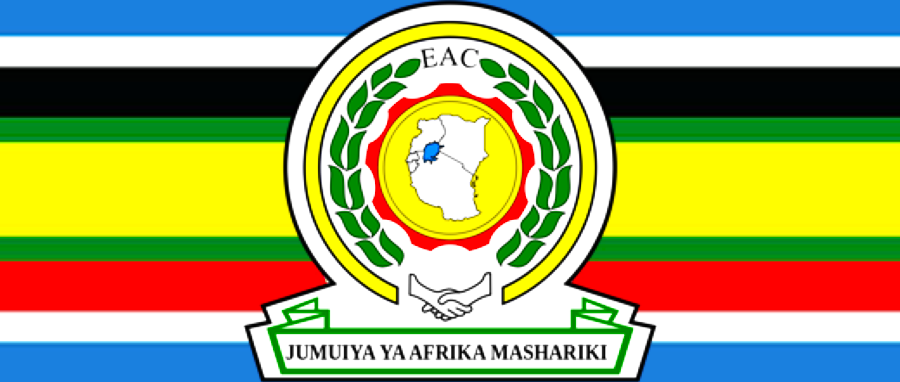As the East African Community prepares to celebrate 25 years of its existence, the EAC emblem continues to recognize only five member states, despite the fact that at the moment there are eight.
The current East African Community symbol features a regional map with the founding members Kenya, Uganda and Tanzania, who kicked off the EAC in November 1999 as well as Burundi and Rwanda that joined a few years later.
However, the member states currently forming the East African Community include Kenya, Uganda, Tanzania, Burundi, Rwanda, Somalia, South Sudan and the Democratic Republic of Congo totalling eight and not five being depicted in the EAC logo.

The East African Community Secretariat recently launched an Insignia to commemorate the Silver Jubilee of the bloc.
However, for some reason the secretariat forgot to rework the EAC emblem, which is still ignoring DR Congo, Somalia and South Sudan the new members of the community.
As for the fanfares to colour the EAC silver jubilee a vibrant Road Festival will be staged on the 28th of November in Arusha, along Boma Road, the street which leads from Clock Tower Junction to National Natural Museum past the City Hall.
“This grand celebration, set to illuminate the heart of Arusha, will take place from six oclock in the evening to a few minutes past midnight. The festival promises an evening filled with cultural displays, live performances,” reveals Veronica Nduva, the Secretary General of the East African Community.
The Boma Road Festival, according to the organizers, should be featuring artists from the East African member states, street parades, and a showcase of the region’s rich heritage, bringing the community together in a ‘jubilant atmosphere!’
“The festival aims to raise awareness of the East African Community achievements and aspirations, engaging citizens and stakeholders alike in embracing the spirit of integration,” the EAC secretariat claims.
As the clock strikes midnight, Arusha’s skies will light up with a spectacular fireworks display, symbolizing the brilliance of East Africa’s shared journey and its bright future.
According to the Secretary General People will be free to attend the open-air event in Arusha.
When the East African Community was being launched twenty-five years ago in November 1999, the event took place at the Sheikh Amri Abeid Stadium and was attended by hundreds of ordinary residents.
Since that time, EAC officials went back into their shell and started doing everything on their own inside the heavily guarded community headquarters in Arusha.
The EAC ivory tower features three gates, screening machines, police officers, guards from private security companies all joining forces in keeping ordinary people at bay.
The people led community, according to observers, was thus hijacked by suit-clad bureaucrats.
Now 25 years later the East African Community wants the ordinary people they ditched 25 years ago to join them in celebrations.
“With a focus on the transformative role of digital innovation, the event will align discussions with the EAC Vision 2050, emphasizing regional integration as a driving force for prosperity across East Africa,” Nduva maintains as she addressed members of the press who attended the EAC briefing.

